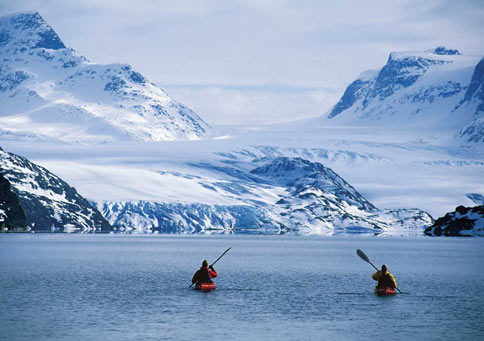
Jim White studies really old ice. He’s director(主任,负责人) of the Institute of Arctic(北极的) and Alpine(阿尔卑斯的) Research at the University of Colorado at Boulder and lead U.S. investigator on the North Greenland Eemian Ice Drilling project or NEEM.
“NEEM is about trying to get a good record of the last interglacial(间冰期的) period from Greenland,” also called the Emian Period, about 120,000 to 130,000 years ago when Greenland was two to three degrees Celsius(摄氏度) warmer than it is today. “And thus it represents our closest analogue(类似物) in time to where we are going in the future.”
White is part of an international team of scientists that, over the past five years, has drilled 2.5 kilometers to down to the island’s bedrock(基岩) to extract(拔出,抽出) a continuous ice core retrieved in three-to-four meter sections. “And once they come up to the surface, we measure, we log and we match to make sure that we know that we're getting a continuous record.”
From gases trapped in the ice, scientists can calculate the greenhouse gas content and air temperatures that prevailed(盛行) in Greenland’s distant past. And from captured dust, rock and plant material in the cores they can paint a precise(精确的) picture of what Greenland was like before it was covered with ice and snow.
相关跟读练习:

